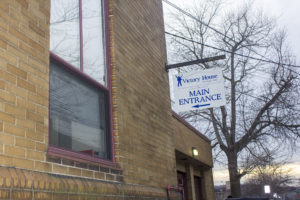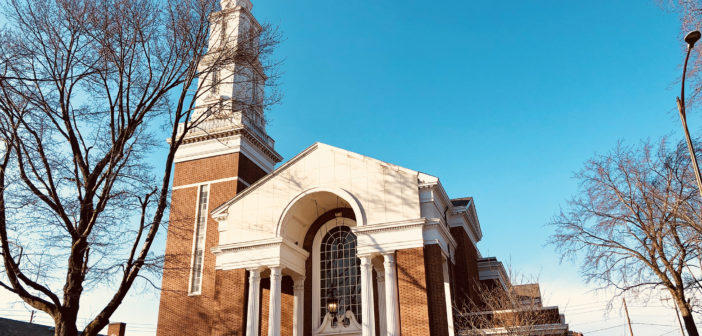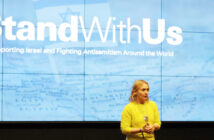Pete still has hope.
A local homeless veteran, Pete fought in the Afghanistan war, and he continues to fight for a place to call his home.
Originally from New Jersey, he moved about since returning from war, mostly couch surfing at his sister’s New Jersey home before being kicked out. He found himself wandering the streets, and he eventually arrived in Bethlehem in 2000.
He held job after job — cleaning Petri dishes, stocking rooms, gardening, delivering items — but the jobs didn’t always last. And his paychecks didn’t cover the bills.
Pete, who chose to keep his last name anonymous, is one of the 1,030 individuals identified as homeless in the Lehigh Valley.
Finding warmth in the winter with wind chills below 30 degrees presents a challenge. Emergency shelters and organizations help these individuals find protection from the elements.
The lack of affordable housing is a large part of this vicious cycle, and for Pete, this cycle is incessant.
Pete uses Bethlehem Emergency Sheltering nightly during the winter months. He receives a warm meal, a hot shower and a mattress to sleep on — a much different experience than laying in the dirt on a tattered sleeping bag.
Pete has been a guest at Bethlehem Emergency Sheltering since its opening in 2009. When he lived with his sister, during the day he searched for work, walking at a slow pace with a Budweiser beer can in his hand. What would be a 20-minute drive for someone with a car was a six-hour walk for Pete.
According to the U.S. Department of Housing and Urban Development, every night in 2017, 553,742 people experienced homelessness, and about 65 percent used transitional housing or emergency shelters.
The report stated in 2017, 40,056 veterans were homeless with 24,690 of them staying in transitional housing or emergency shelters.
But then, Pete found Hope for Veterans in 2016.
The program helped him find a new job and a one-bedroom apartment. It paid his rent for three months. Then, the company downsized, and Pete couldn’t afford to pay his bills.
“The last place they put me up was two blocks from the (Allentown) jail,” Pete said. “I heard gunshots all hours of the night. I was scared. But it was a place to stay — out of the cold. Then, I was laid off. So here I am, in the same situation I was before: homeless.”
It’s stories like Pete’s that have led to the creation of advocacy groups that help the homeless find shelter and food, especially during the winter.
United Way is a worldwide initiative that helps people connect with local resources. The United Way’s 2-1-1 initiative is a “free service offered seven days a week in over 150 languages across North America,” which helps people find resources like healthcare, shelter and food.
This service became available to the Lehigh Valley in 2013. Those in need must complete the Vulnerability Index – Service Prioritization Decision Assistance Tool test to determine the specific services they require. They are asked about their history, homelessness, the medical risks they face and their daily activities.
Marc Rittle, the vice president of impact at United Way of the greater Lehigh Valley, said over 70 percent of people who call in the Lehigh Valley are at risk of eviction or are already homeless.
At the beginning of 2017, 2-1-1 in the Lehigh Valley started recording the number of homeless people who requested its services. Rittle said every organization requires those who are requesting services to call 2-1-1 or have a social worker call. With this data, 2-1-1 can also track the number of available spots in Lehigh Valley shelters.
Pete said local homeless people now know where to go and what resources are available — especially on a frigidly cold night.
Pete said he continues to bounce around — sometimes he stays at a shelter, sleeps at his campsite tucked away from civilian life in the woods or crashes on his sister’s couch when they are on good terms.
While the Lehigh Valley offers many services like 2-1-1, it can still be difficult to find shelter in the winter.
Ann Gastinger, the shelter chair for the Unitarian Universalist Church of the Lehigh Valley, heard that two people froze to death by sleeping outside in below-freezing temperatures in 2009.
Gastinger couldn’t imagine people were suffering in her city. She wanted to help.
At the same time, many guests at Trinity Soup Kitchen told social worker Marcie Lightwood and Trinity Church’s Deacon Liz Miller about their concern of hypothermia.
Miller said she called St. Andrew’s Church and the Cathedral Church of the Nativity to determine if they could act as emergency shelters. Then, five more churches volunteered one night per week.
Gastinger’s shelter hosted 102 guests during the winter in 2009-2010.
By March of 2009, 12 churches served as a shelter one day per week. Miller said with the growing need each year, there is now more funding and a board of directors to oversee the effort.
Pete said he would go to a different church shelter each night.
“Tonight is ‘Betty Boop’s house,’” he said, but he knew this winter would be different, as he was helping to put together bunk beds at the Christ Church UCC.
The Christ Church UCC is holding Bethlehem Emergency Sheltering, with each church hosting one or two shelter nights per month, from December to March.
On a brisk, below-freezing Wednesday night in February, more than 50 guests stood at the back door of the church, ready to complete the registration process at 5 p.m., which entailed filling out personal information and registering with 2-1-1. Guests 18 years and older were brought into the dining area by volunteers to enjoy a hot meal.
One of the volunteers directed the guests to separate women’s and men’s sections — set up like a hostel — with fresh blankets and sheets. There were areas for belongings under each bed or shopping carts in the corner of the room. This was a place they could call home only until 7 a.m. when they would need to face the cold again.
Gastinger said some go to work, hang out in the Bethlehem Public Library, venture to New Bethany Ministries or walk back to their campsites in the woods.
But, during the winter months, no two shelters are the same.
The Salvation Army of Allentown is the only shelter in the Lehigh Valley that provides emergency shelter to families, predominately to women and children.
A few months ago, Eleana Belletieri, the Allentown Salvation Army shelter program director, received a phone call from one of her previous guests. She wanted to donate her furniture to a current guest living in one of six transitional housing apartments above the emergency shelter.
Belletieri said the guest had come in with her daughter after losing her job. The shelter helped her find a new job and offered financial advice to keep up with her payments.
After 45 days at the shelter, she found an apartment. Recently, she purchased a home.
“You hear stories like this, and you know you can’t save everybody, but it’s good to hear you are making a difference,” Belletieri said.
Belletieri said between 2016-2017, the Salvation Army of Allentown served 265 women and children who stayed an average of 45 days.
“We don’t discriminate against anyone who walks through the door,” Belletieri said. “We’re all in this together.”
Some shelters continue to help homeless veterans stay off the streets, offering them hope.
For Brian Smith, Victory House served this purpose.
Returning from the Desert Storm, he had a difficult time re-adjusting to civilian life. He turned to alcohol and drugs to drown his sorrows and anger.
Eventually, Smith was driven to the streets and became a homeless veteran.
He hit rock bottom in 1998. In 2009, he sought help at a medical center in Coatesville that pushed him to join the Victory House program in 2011. Victory House became his home for one year.
Today, Smith is the residential staff and volunteer supervisor.
“I used these resources to the best of my ability,” Smith said.

The Victory House offers transitional housing for veterans and homeless men between the ages of 18-65. Brian Smith, who was a homeless veteran and a guest of the house for one year is now the residential staff and volunteer supervisor. (B&W Staff).
Victory House has served as transitional housing for veterans and homeless men between the ages of 18-65 in the Lehigh Valley since 1985.
There are 40 beds — 19 for local veterans, 20 beds for local non-veterans and one extra bed for emergency situations. There is dorm-style housing as well as transitional housing.
Smith said people are often referred to the Victory House based on a screening process through Lehigh County Drug and Alcohol or Northampton County Drug and Alcohol. Some are referred by the 2-1-1 Coordinated Entry System, department of corrections or local institutions.
Smith found a new life through Victory House, but for Pete, his journey continues.
He’s searching for work and stability. In the meantime, he can call Bethlehem Emergency Sheltering his home during the winter months until he finds a place of his own.
He still has hope, and he’s not alone.
————————————————————————————————————
Resources
For more information about local Lehigh Valley shelters:
Emergency Shelters
Allentown Rescue Mission — The Gateway Center — men only, 355 Hamilton St, Allentown, PA 18101
Safe Harbor, 536 Bushkill Dr, Easton, PA 18042
Bethlehem Emergency Sheltering, 75 E Market St, Bethlehem, PA 18018
Men’s Shelters
Allentown Rescue Mission, 355 Hamilton St, Allentown, PA 18101
Safe Harbor, 536 Bushkill Dr, Easton, PA 18042
Victory House of Lehigh Valley, 314 Fillmore St, Bethlehem, PA 18015
Women’s Shelters
Third Street Alliance, 41 N 3rd St, Easton, PA 18042
The Salvation Army of Allentown, 344 N 7th St, Allentown, PA 18101
Safe Harbor, 536 Bushkill Dr, Easton, PA 18042
Youth Shelters
Valley Youth House, 539 8th Avenue Bethlehem, PA 18018






Comment policy
Comments posted to The Brown and White website are reviewed by a moderator before being approved. Incendiary speech or harassing language, including comments targeted at individuals, may be deemed unacceptable and not published. Spam and other soliciting will also be declined.
The Brown and White also reserves the right to not publish entirely anonymous comments.
1 Comment
I had been a homeless resident of this shelter since it began on January 2009.I was taking advantage of some of the homeless residents while I was at the shelter.I had false accusations made against me.Some residents acted like I was a combination of being mentally ill,gullible,retarded,slow,insane and illiterate.They would treat me that way.The reason why I had these accusations made against me is because I am a born again Christian.When you are a Christian you will be hated and persecuted for the sake of Jesus Christ.